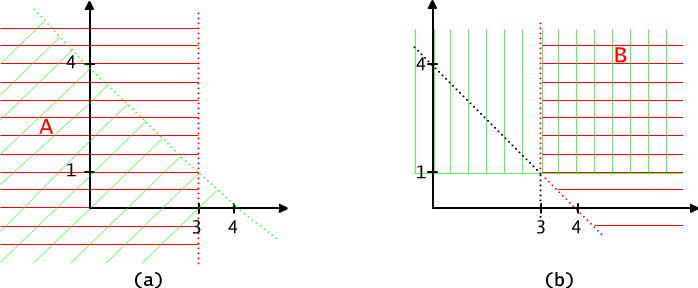| « previous section | next section » |
Definition 7.2.1
Let α(x) be a predicate defined in the
set X. We say that an element a∈X
satisfies α(x) (or that propositional
function α(x) is satisfied by an element a)
if and only if the proposition α(a/x)
obtained when a replace x in α(x) is
true.
We notice all values which satisfy the propositional function α(x) by {x∈X: α(x)}. More strictly, we should write
{a ∈ X: α (a/x) is a true proposition},
but we usually use a shorter form providing that it does not lead to misunderstanding.
Every propositional function determines some subset (some property) of the space in which it is defined, namely the set of this arguments for which the propositional function is satisfied.
Lemma 7.2.1
For any propositional functions α(x) and β(x) defined over a set X the following equalities hold:
{x ∈ X: α(x)} ∪ {x ∈ X: β(x)} = {x ∈ X: ( α(x) ∨ β(x))},
{x ∈ X: α(x)} ∩ {x ∈X: β(x)} = {x ∈ X: ( α(x) ∧ β(x))},
-{x ∈ X: α(x)} = {x ∈ X: ¬ α(x)}.
Proof.
We prove only the first of the mentioned formulas (The Reader can prove the remaining two using a similar method).
Let a ∈ {x ∈X: α(x)} ∪ {x ∈X: β(x)}. Then, according to the definition of the union of sets, the element a belongs to at least one of the sets {x ∈X: α(x)}, {x ∈X: β(x)}. It means that a satisfies the propositional function α(x) or satisfies the propositional function β(x), that is the disjunction α(a/x) ∨(a/x) is true. Hence a ∈ {x ∈X: α(x) ∨ β(x)}.
Conversely, if a ∈ {x ∈X: α(x)∨β(x)}, then α(a/x) ∨β(a/x) is a true proposition. Using two-argument Boolean algebra (see subsection 6.2) at least one of propositions α(a/x), β(a/x) is true. It follows that a belongs to the set {x ∈X: α(x)} or to the set {x ∈X:β(x)} (or both), i.e a ∈ {x ∈X: α(x)} ∪ {x ∈X: β(x)}. ♦

Fig. 7.2.1 Set of plane points that satisfy (a) the propositional function ((x-3 < 0) ∨(x+y< 4)), (b) the propositional function ¬ ((x-3 < 0) ∨ (x+y< 4)) ∧ (y ≥ 1).
Example 7.2.1
Question 7.2.1 Find the values of x which satisfy the propositional function ((x ≤ 1 ∨ x >1) → x2 =1) in the set of all real numbers.
| « previous section | next section » |